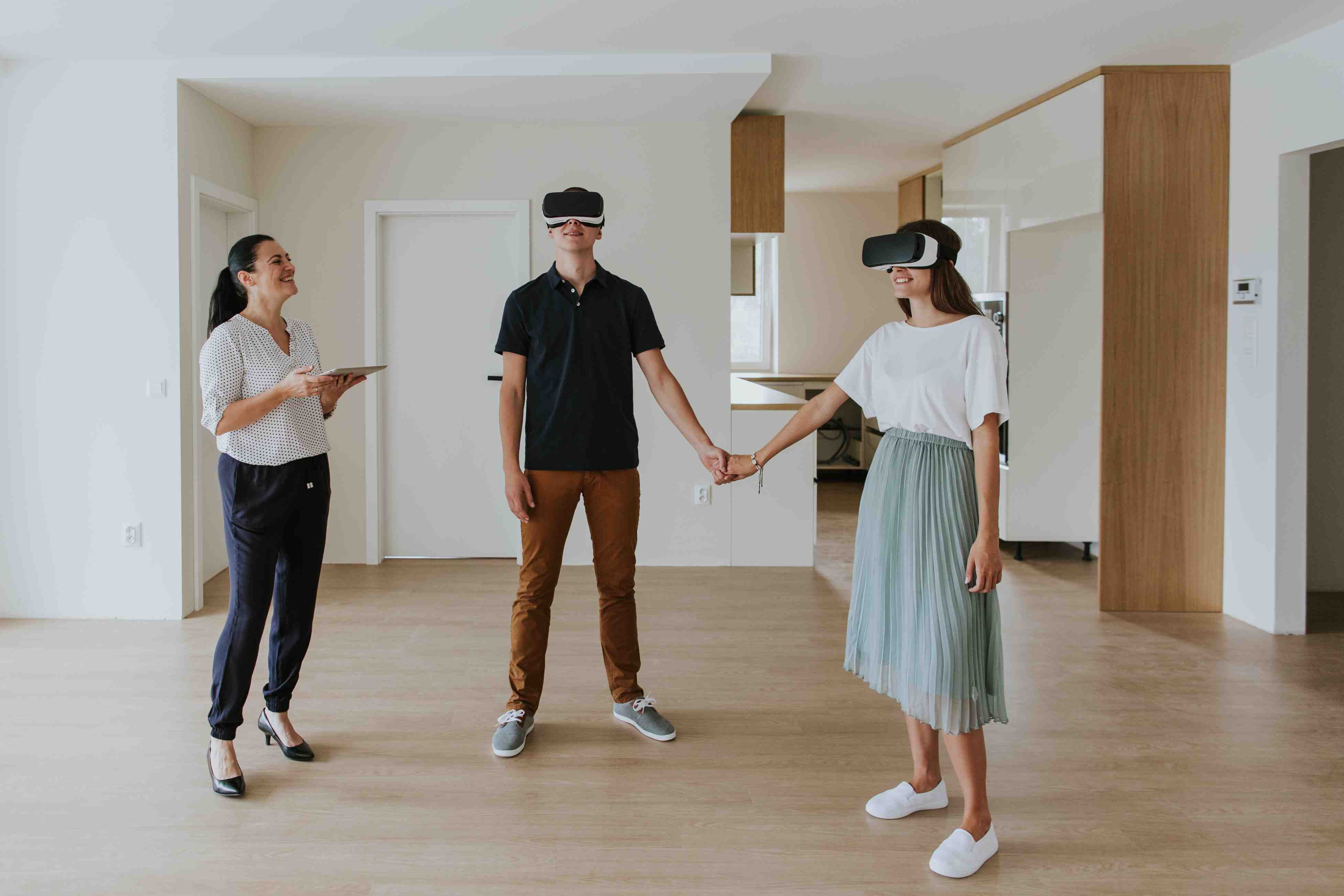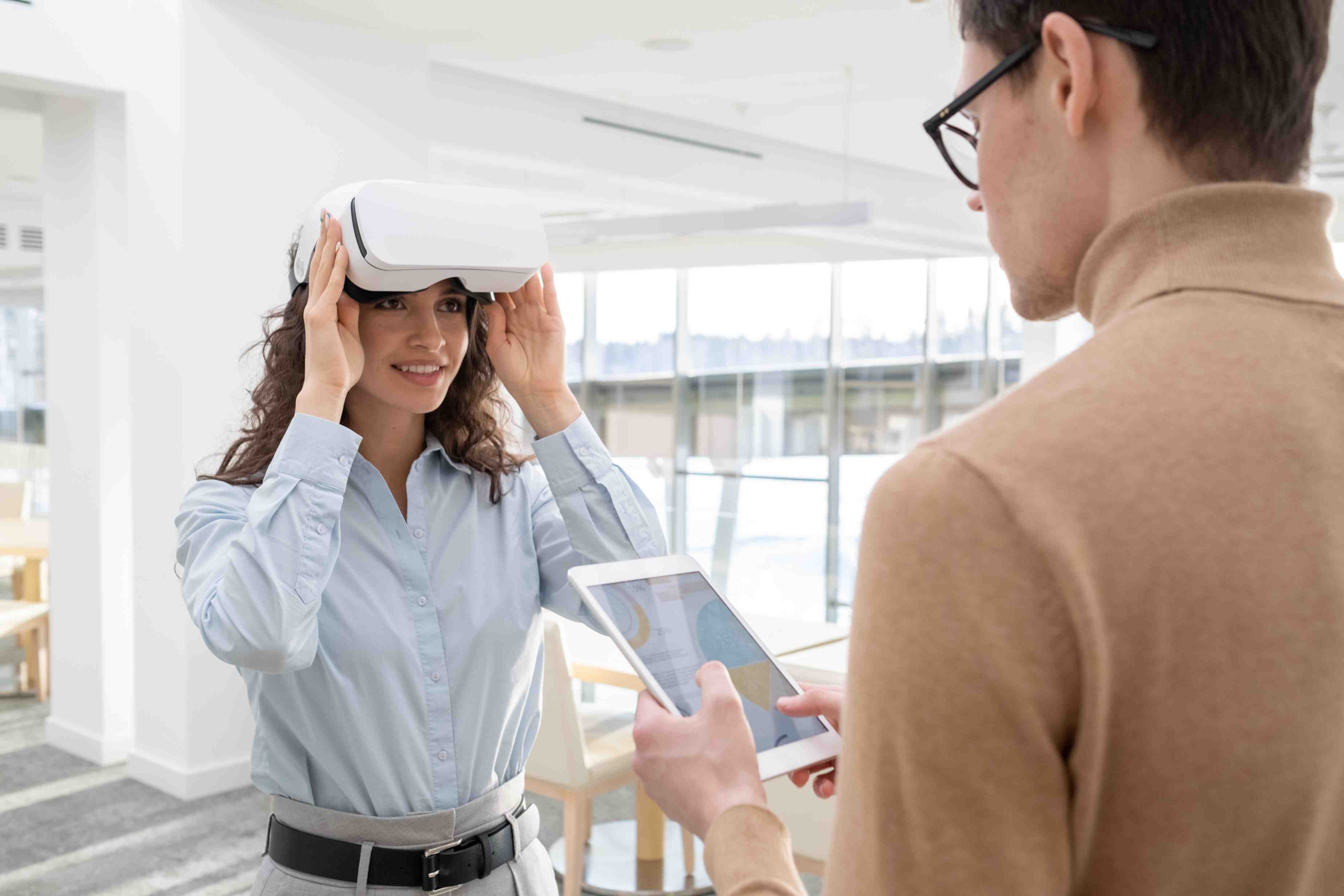Jan 31, 2025
Digital Solution
2 Comments
Interactive Walkthroughs: Transforming User Experiences with Advanced Tech
Interactive walkthroughs are at the forefront of innovation, revolutionizing industries from real estate and education to gaming and retail. These immersive experiences leverage cutting-edge tools like 3D modeling, virtual reality (VR), augmented reality (AR), and mixed reality (MR) to offer users a hands-on way to explore spaces, products, and processes.
This comprehensive guide delves into the exciting world of interactive walkthroughs, exploring their types, benefits, applications, and future potential.
What Are Interactive Walkthroughs?
Interactive walkthroughs are digital experiences that allow users to explore virtual environments, products, or processes in an immersive and engaging way. Unlike static images or videos, these walkthroughs enable active participation, where users can navigate and interact with the content.
For example, a potential homebuyer can virtually “walk through” a property using a 3D walkthrough, or a student can explore the inner workings of a cell using an augmented reality application. These experiences bridge the gap between physical and digital spaces, enhancing understanding, engagement, and decision-making.
Types of Interactive Walkthroughs
1. Virtual Walkthroughs
Virtual walkthroughs create a fully simulated environment, allowing users to explore spaces digitally as if they were physically present. These walkthroughs are highly popular in industries like real estate, where potential buyers can tour properties without visiting in person. With seamless navigation and realistic visuals, virtual walkthroughs provide a convenient and immersive alternative to traditional tours.
2. 3D Walkthroughs
3D walkthroughs offer enhanced realism by utilizing detailed, three-dimensional models of spaces or products. These walkthroughs are commonly used in architecture, gaming, and interior design, allowing users to interact with elements such as furniture layouts, material textures, and lighting options. The ability to make changes in real-time makes 3D walkthroughs an invaluable tool for planning and decision-making.
3. Augmented Reality (AR) Walkthroughs
AR walkthroughs overlay digital content onto physical environments, blending virtual and real-world elements. For instance, museums can use AR to recreate historical artifacts or events within their existing displays. AR walkthroughs are ideal for providing additional layers of information or visuals in real-time, enhancing the learning and exploration experience.
4. Mixed Reality (MR) Walkthroughs
Mixed reality takes AR one step further by integrating digital and physical elements seamlessly. Users can interact with virtual objects as if they were part of the real world. In manufacturing, MR walkthroughs allow operators to view machinery with overlaid operational data, facilitating troubleshooting and training. If you’re looking to develop an MR solution, it’s essential to understand how to choose mixed reality development services that fit your needs.
5. Extended Reality (XR) Walkthroughs
XR apps combine AR, VR, and MR under one umbrella, offering versatile experiences that adapt to different platforms and devices. XR walkthroughs are particularly useful for industries like gaming and retail, where fully immersive environments can be scaled across multiple user interfaces.
How Interactive Walkthroughs Work
1. 3D Modeling and Rendering
The backbone of interactive walkthroughs lies in precise 3D modeling. Software like Blender, SketchUp, or AutoCAD is used to create accurate representations of spaces or objects. High-quality rendering adds realistic details, including textures, shadows, and animations, ensuring a lifelike experience.
2. Interactive Interfaces
Walkthroughs require user-friendly interfaces to facilitate interaction. Devices like VR headsets, smartphones, tablets, and computers serve as gateways, while touchscreens, motion sensors, and controllers enhance the interactivity, making navigation smooth and intuitive.
3. Integration of Real-Time Data
Dynamic walkthroughs leverage real-time data integration to provide up-to-date information. For example, a virtual store walkthrough might display live inventory data or product availability, enabling users to make informed decisions instantly.
4. Cloud-Based Access
Hosting walkthroughs on cloud platforms ensures scalability and easy accessibility. Users can access walkthroughs through web links, eliminating the need for complex installations and making it easy to share experiences with global audiences.
Benefits of Interactive Walkthroughs
1. Enhanced User Engagement
Interactive walkthroughs go beyond static visuals by allowing users to actively participate in the experience. Whether exploring a historical site virtually or customizing a product in real-time, users remain engaged, which boosts learning, retention, and satisfaction.
2. Better Decision-Making
Walkthroughs provide detailed insights into spaces or products, enabling users to make confident choices. For instance, homebuyers can explore properties thoroughly before visiting, saving time and ensuring they see only the most relevant options.
3. Time and Cost Efficiency
Interactive walkthroughs eliminate the need for physical travel or on-site visits, saving time and reducing expenses. In industries like retail and education, they provide a cost-effective alternative to traditional demonstrations and field trips.
4. Scalability and Accessibility
Digital walkthroughs are easy to scale and share, reaching global audiences without geographical constraints. Features like voice guidance or multi-language support ensure that they are accessible to a wide range of users, including those with disabilities.
5. Customization
Interactive walkthroughs can be tailored to fit specific user needs or preferences. Whether it’s branding elements for a corporate event or personalized settings for an educational experience, customization ensures that each walkthrough feels unique and relevant.
Applications of Interactive Walkthroughs
1. Real Estate
Real estate professionals use virtual tours to showcase properties to potential buyers or renters. Features like panoramic views, floor plans, and interactive elements allow users to explore homes in detail, making the decision-making process more efficient.
2. Education and Training
Interactive walkthroughs bring abstract concepts to life. Students can explore a virtual representation of the solar system or delve into human anatomy using AR. In corporate training, walkthroughs simulate real-world scenarios, such as operating machinery or managing emergencies.
3. Retail and E-Commerce
Retailers use walkthroughs to provide a virtual shopping experience. Customers can explore store layouts, try on clothes virtually, or see how furniture would look in their homes. These features not only enhance convenience but also improve conversion rates.
4. Architecture and Interior Design
Architects and designers rely on 3D walkthroughs to present their work to clients. Real-time customization options, such as material swaps or lighting adjustments, enable clients to visualize the final result and provide feedback instantly.
5. Gaming and Entertainment
Interactive walkthroughs are integral to creating immersive gaming environments. Players can explore virtual worlds in detail, interact with characters, and solve challenges. The use of AR and VR enhances these experiences, making them more engaging and realistic.
6. Tourism and Hospitality
Hotels and tourist attractions use walkthroughs to give potential visitors a preview of their offerings. Virtual tours of hotel rooms, scenic locations, or historical landmarks help users plan trips and build excitement for their experiences.
7. Healthcare
In healthcare, AR and VR walkthroughs are used for medical training, patient education, and procedural planning. For example, surgeons can practice complex operations in a virtual environment, improving precision and confidence.
Technologies Behind Interactive Walkthroughs
1. Virtual Reality (VR)
Integrating VR into interactive walkthroughs creates fully immersive experiences, making it ideal for gaming, training, and real estate applications. Devices like Oculus Quest and HTC Vive provide high-quality VR experiences, enabling users to explore and interact with virtual spaces.
2. Augmented Reality (AR)
AR enhances the real world with digital overlays, making it suitable for retail, education, and healthcare. Platforms like ARKit and ARCore offer developers the tools to create AR experiences accessible via smartphones and tablets. If you’re looking to get started with AR, you may want to learn about WebAR, which enables AR experiences directly through web browsers without the need for an app.
3. Web-Based Walkthroughs
Web-based walkthroughs prioritize accessibility by eliminating the need for specialized hardware. Technologies like WebGL and HTML5 power these experiences, making them ideal for e-commerce and real estate applications.
4. AI and Machine Learning
Integrating artificial intelligence into walkthroughs allows for smarter, more personalized experiences. AI-driven features, such as voice commands and predictive recommendations, enhance usability and engagement, making walkthroughs more dynamic and responsive.
5. Cloud Computing
Cloud-based hosting ensures that walkthroughs are accessible anytime, anywhere. This technology enables real-time collaboration, scalability, and data storage, making it a critical component for global applications.
Future Trends in Interactive Walkthroughs
1. AI-Powered Customization
Future walkthroughs will leverage AI to deliver hyper-personalized experiences. For example, an AI-driven real estate tour could highlight properties that match the user’s budget, preferences, and lifestyle, enhancing the relevance of the experience.
2. Integration with IoT
The integration of IoT devices will make walkthroughs more interactive and dynamic. Users could control smart home features, such as lighting and temperature, directly within a virtual home tour, offering a truly connected experience.
3. Photorealistic Experiences
Advancements in rendering technology will enable walkthroughs that are nearly indistinguishable from real life. This level of realism will revolutionize industries like gaming, architecture, and retail by providing highly immersive and accurate simulations.
4. Cross-Platform Compatibility
Interactive walkthroughs will become universally accessible across devices, from smartphones to VR headsets and AR glasses. This will ensure a seamless experience for users, regardless of their preferred platform.
5. Hybrid Reality Experiences
As AR and VR technologies merge, hybrid experiences will become the norm. These will allow users to switch seamlessly between physical and virtual environments, making walkthroughs more versatile and engaging than ever before.
Conclusion
Interactive walkthroughs are revolutionizing how we explore, learn, and interact with digital and physical spaces. Whether through virtual property tours, AR-based product showcases, or immersive gaming environments, these experiences are setting new standards for engagement and accessibility.
As technology continues to evolve, interactive walkthroughs will become even more integral to industries ranging from real estate and retail to healthcare and education. By embracing these innovations, organizations can provide richer, more personalized experiences that captivate and inspire their audiences.
Tags
Digital





